A UK-led aerospace consortium has unveiled a bold new programme to develop a Mach 5-capable reusable aircraft, targeting its first flight by early 2031.
Known as INVICTUS, the €7 million initiative is funded by the European Space Agency (ESA) and aims to lay the groundwork for horizontal space launch using air-breathing hypersonic propulsion.
Announced ahead of the UK Space Conference, the INVICTUS programme is led by Frazer-Nash and brings together major industrial and academic players including Spirit AeroSystems and Cranfield University, alongside a number of SMEs.
Over the next 12 months, the team will complete a concept and partial preliminary design for the full flight system, including requirements, analysis, and development planning.
Central to the project is the use of precooled hydrogen-fuelled propulsion, a technology long championed by Reaction Engines Ltd (REL). That firm’s proprietary precooler system allows incoming hypersonic airflow to be cooled before entering the engine, enabling sustained operation at extreme speeds far beyond the limit of conventional jet engines.
Although Reaction Engines ceased operations in 2024 after failing to secure a financial lifeline, their legacy lives on. Frazer-Nash has absorbed a team of REL experts into its ranks, retaining vital knowledge from a decade of propulsion R&D and experimental testing.
The collapse of REL dealt a major blow to the UK’s Hypersonic Air Vehicle Experimental (HVX) programme, where it played a central role. Its work on the Synergetic Air Breathing Rocket Engine (SABRE) and precooler technology was key to the UK’s ambitions for reusable hypersonic systems.
Mach 5, five times the speed of sound, is significantly faster than the SR-71 Blackbird or Concorde. Previous REL tests validated precooler integration with jet engine systems under such conditions, marking a critical proof-of-concept.
“Hypersonic flight is not just the next frontier of aerospace, it is the gateway to a new paradigm of mobility, defence, and space access,” said Dr Tommaso Ghidini, Head of the Mechanical Department at ESA. “With INVICTUS, Europe is seizing the opportunity to lead in technologies that will redefine how we move across the planet and reach beyond it. By mastering reusable, air-breathing propulsion, we are laying the foundation for aircraft that take off like planes and reach orbit like rockets, revolutionising both terrestrial and orbital transportation.”
Frazer-Nash Managing Director Sarah Wilkes said: “INVICTUS is an exciting opportunity to provide advanced technology for space and advance capabilities in defence. With strong industry support and deep engineering and aerospace expertise, including Frazer-Nash colleagues with a decade of propulsion experience, we have all the right ingredients to make this ambitious vision a reality.”
Tony Forsythe, Head of Space Technology at the UK Space Agency, added: “This exciting project, made possible by our investments in the European Space Agency, has significant potential to build on advanced cooling and hypersonic propulsion technology developed by UK engineers over many years. We look forward to seeing how the work develops and the opportunity it presents for boosting economic growth and national security.”


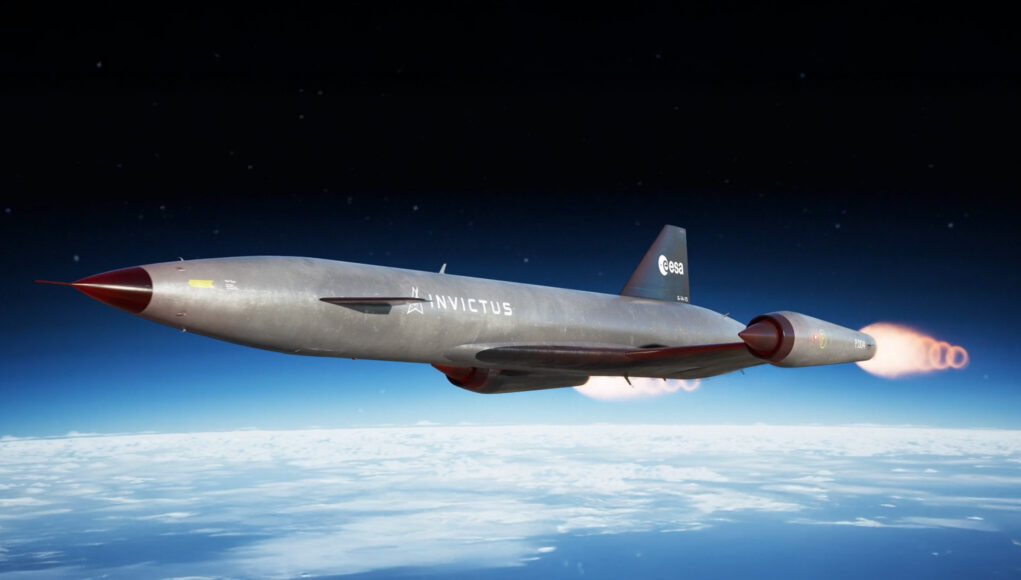


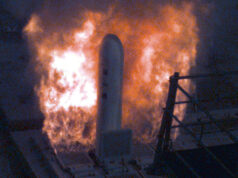

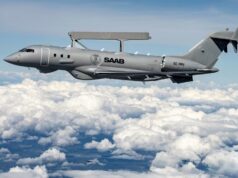


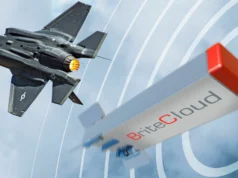

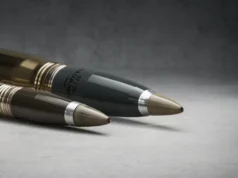

F.A.B Virgil.
That’s deffo Thunderbird 1.
Did you know that F.A.B stood for Thunderbirds are Brill ?
🚀 … Fully Acknowledged Broadcast.
Spoil sport.
So Gerry Anderson was dyslexic. Not many people know that!
No, Dyslexic was Magnums sister.
What’s Michael Caine got to do with it ?
Knew we’d see Reaction Engines tech pop back up again before long. Still highly dubious of the utility of an SSTO vehicle with the requisite constraints on capacity
Yes it was always going to I mean RR ran a standard jet engine on a test bench for many hours at near hypersonic thrust only weeks before the collapse so much of the technology had a sound basis. But yes SSTO is still the real question to be answered isn’t it but a number are trying and that’s because the concept of sub orbital point to point flight is catching on which is more achievable and can be a mid step to orbit itself.
Fact is escaping Earths gravity is only just in the Goldilocks zone for being able to launch into orbit at all even with rockets and single stage to orbit is right at the limits with present technology. No matter how good your hybrid engine not losing part of your craft reaching orbit or even the stratosphere gives you very little leeway. If the debilitating weight problems Space X have faced in the development of Starship despite super efficient engines, plagued a spaceplane it would be a totally impractical proposition and by some distance. It’s only becoming remotely feasible now despite designs persisting from the sixties in one form or another is new engine technology and materials that allow immense potential power and in terms of structures lightness, particularly with carbon fibre and similar materials to offer a real chance of success. Trouble is what payload can you get there with? To be practical you also need to be able to take off and land from a wide number of runways.
A number of concerns are going for this goal, including a New Zealand company and a Canadian concern working out of Cornwall and of course at least two US efforts so clearly such technology is in the minds of many be ming a practical proposition. For the present I still like the compromise solution of DreamChaser which I think will revitalise Spaceplane interest and eventually taking the concept in purer form further. DreamChaser technology originated in Russia 50 years ago and has gone through a very long gestation period and is now on st least its third life so when companies fail to make a success of a project it doesn’t mean the concept dies with it as it’s too easy to presume.
Unrelated but interesting to note is an effort to combine hypersonic propulsion with airship technology to get to orbit in two stages via an orbiting airship based stratospheric sub-space station which makes spaceplanes loom like a doddle to me.
It was an absolute travesty allowing Reaction Engines Ltd, its project Skylon powered by the air-breathing engine SABRE, to go to the wall. Short-sighted just like Ken Clarke’s diabolical decision in the late 80’s when he pulled the plug on Alan Bond’s intial project. Going forward, I so hope REL and SABRE will be resurrected in powering this project. UK back at the forefront and back in the game of cutting age aerospace technologies.
seconded in spades.
I love SABRE it’s a great and technically practical concept though there are questions as to viability as things stand.
Technology may not yet be up to the job but likely will be. But the big question is whether a practical use case to make for the investment and production examples practical. The engine might work perfectly but can it power a SSTO spaceplane to orbit and if so in a way that it can make money. If not single stage would it enable a two stage solution to be considered ie releasing a smaller spaceplane or inter stage from a larger carrier aircraft as REL were coming around to as an initial compromise solution or perhaps related to this as a stratospheric hypersonic point to point platform. Again it not only has to be technically able it needs to be a profitable or offer advantages over alternative solutions rather than just be a technological marvel. But great to see REL technology being given a chance to show what it can do, if you simply wait for an establish use case to develop before developing technology to achieve it you generally find someone gets there before you and often inferior technology and methodology may win out. All about timing.
I was hugely disappointed to see them fall as well, but I suppose it’s always worth remembering that the ideas and experience was all human. A business died, just a money making enterprise really. The expertise and ideas didn’t die. And if lots of very talented thinkers were tied to a firm where the business side of things simply wasn’t viable then having them relocate elsewhere may be a more productive use of the talent.
No it wasn’t, their technology did not work and no one wanted it. The Administrators are currently trying to sell the IP for a whopping £350,000 which shows how much it was worth.
RE was a worthy experiment but let’s not pretend it was anything other than a high risk gamble that did not pay off for either the Treasury or the vast number of private investors who put money in.
Just like “Thrust 2”.
Years of taking private money and then nothing.
I always knew it would never take off.
SKYLON didn’t work. SABRE did, but because RE were always aiming for the former that put off collaborators in what would otherwise have been useful closer to the ground.
The engine run worked in hypersonic conditions and the precooler capillaries had applications anywhere you want to cool a gas down.
How did you get on with the Triton info ?
Found a Ships Monthly article from September last year saying that Triton had been moved from Hull (where it’s been on Google Earth for the last few years) to Portland and “Could be reactivated, but her future is unclear”.
She’s there on the Google Maps satellite imagery as well, and it looks like she’s having work done on board with all of the davits removed etc. -your photos will show more of that than I can find out.
My Photo’s show her from the stern, she looks rather stripped and bare and very weather worn but I had to zoom-in as it was quite a distance away. Interesting design/concept that has outlived many an RN vessel.
RR had access to the technology and walked away from further investment. That speaks volumes to me. My guess is RDE is where they will now be looking to invest. It looks like RDE could also be a threat to RR’s existing business. A lack of complex moving parts sounds like a big win on the TCO side as well.
Pratt& Whitney and RTX are doing lots of R&D on detonation engines I’d be surprised if Rolls Royce weren’t seriously looking at it.
To boldly go where……
‘It doesn’t work, REL employees even came on here to tell us’. One presumes those ‘employees’ aren’t involved in this new venture. Being serious though I tried to be reasonable and realistic about the REL collapse and explain that there was no published evidence that the technology, certainly the super cooling, ‘didn’t work’. Usually technology advances are never that black and white and as I stated investment to the level needed never easy to obtain especially when you truly are pushing boundaries over many years of commitment. Fact is the TV didn’t work for decades of experiments after all the required technology existed, the lightbulb again decades to perfect it by many different inventors. Electricity grids, sodium batteries, heating/cooling elements, RISC chips, mobile telephony, computerisation virtually every technology failed many times and often the world told it didn’t work, before succeeding and becoming vital aspects of modern life. Bell was derided by Edison that his approach to the telephone would never work, Mobile phones weren’t practical till a long forgotten radio packet patent (originally proposed for torpedoes) was exploited and properly developed.
Fact is it’s always dangerous to write anything off as a certainty, but we also have to be cautious, we don’t know if this new venture will move the technology on where REL was unable to, it might get there or it might progress it to the next stage, we don’t know but one thing I will say is this sort of hybrid engine concept will eventually succeed but it’s a little chicken and egg, many see the potential for an eventual use case but equally you often need a reasonably mature use case to exist to propel the technology to succeed. Generally picking the right point and timing between the two extremes leads to success, get it wrong and it appears like a big often public failure. Persistence is key and it will be interesting to see what aspects of the REL technology is persisted with and what new elements might come into play. Good certainly that as I predicted the patents held by REL would be taken up by others as much of it had been shown to work the problem is always as I said being made to work reliably and cost effectively enough and in a technology where you are pushing gravitational limits with space planes it works well enough to get over the line of practicality. That problem is presently haunting Starship to the point indeed where many a cynic might claim it’s a dead end. We shall see on both counts I guess.
I wonder whether a use could be made in aeroballistic missiles?
Exoatmospheric rocket flight, followed by an air-breathing hypersonic cruise phase having pulled out of a ballistic dive towards the target?
All depends on how expensive the precooler is, I suppose.
The principles are sound. Cooling the mass of air before it enters the engine has significant benefits. Trying to “supercool” that air to below -50C is the trick. The pre-cooler with the ultra thin tubes did work in this context. But I believe they never really solved the ice formation problem around the tubes. As the ice blocked the airflow around the pipes, thereby inhibiting heat transfer.
About 10 years ago, I remember them testing the pre-cooler on an old RR turbojet (could have been an Avon). Bearing in mind this was a ground trial, the claim according to the demonstration was a 50% increase in thrust. However, the plumbing and further heat exchangers were on an industrial scale. At this point proving the concept, not really suitable for aircraft installation and still very much a science project.
I still hope that the icing problem can be solved, as this will be like a night to day change in gas turbine efficiencies/power.
Indeed.. sometimes something does not work now, but that is no reason to not keep trying. Humanity worked on heavier than air aircraft flight for almost a 1000 years on and off before Otto Lilienthal made the first successful glider.
Hmmm…perhaps AUKUS Pillar 2 funding? Defence case primary, commercial secondary. This arena of R&D is virtually guaranteed, ticks all the boxes.
Interesting. FN was working for REL at one point- investigating commercial opportunities for the technology. Obviously decided the carcass was worth picking over.
Good to hear Reaction Engines personnel involved – why the government let that fail i’ll never know.